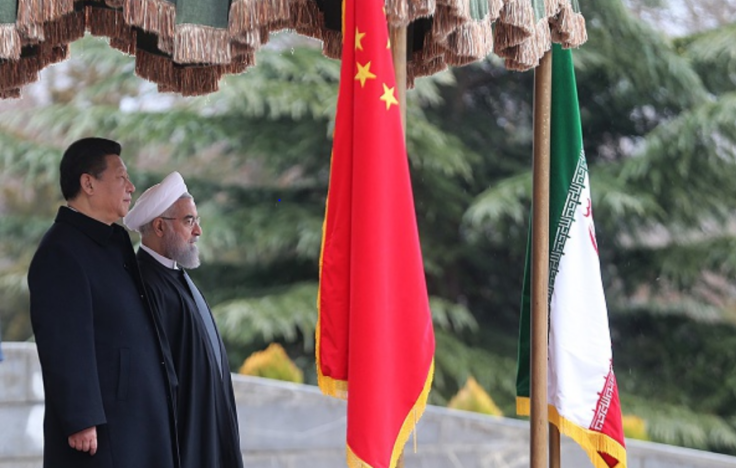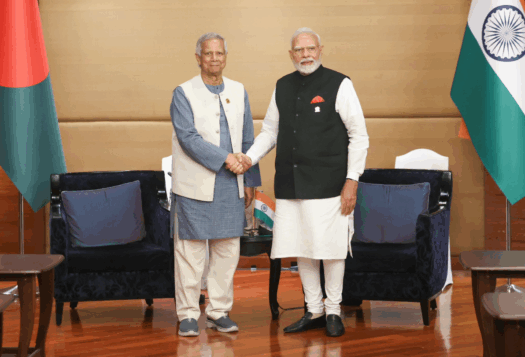
In a significant diplomatic move earlier this month, Iran’s Supreme Leader Ayatollah Khamenei launched a Twitter handle in Hindi. Khamenei already maintains Twitter accounts in many languages, including English, Persian, Arabic, Urdu, French, Spanish, and Russian. Hindi became the latest addition to this cluster of accounts. However, the timing of Iran’s Supreme Leader’s move is particularly notable. It coincides with rising speculations of Iran’s disillusion with India, which have been bolstered by the reports of Tehran excluding New Delhi from the Chabahar expansion project while moving closer to Beijing. Reportedly, China and Iran are entering a 25-year comprehensive strategic partnership with cooperation in trade, politics, culture, and security. Much to the chagrin of India, this deal has accelerated the already deteriorating ties between New Delhi and Tehran, which have worsened since the U.S. withdrawal from the Joint Comprehensive Plan of Action (JCPOA) and the subsequent escalation of tensions between the United States and Iran.
Nonetheless, soon after the deal with China was announced, Iran’s foreign ministry spokesperson stated on Twitter that: “#Iran has a longstanding policy of maintaining balanced, friendly relations w/ all Eurasian & E/S Asian powers. Our potential longterm cooperation agreements w/ #China & #Russia, & our continued joint work w/ #India in Chabahar prove this. We are determined to uphold this policy.” Iran has maintained strategic independence in pursuit of its foreign policy. Since the Islamic Revolution in 1978, Tehran followed a policy of “Neither East nor West.” Even as it began to look East, Tehran, more or less, sought to maintain its strategic independence as it pursued an aversion to align with any power in the Asian strategic landscape (with the exception of a minor alignment with Russia in Syria). A good example in this regard is how Iran sought to align and accommodate the interests of India, Pakistan, and China in the building of Chabahar port along with its strategic interests.
In such a framework, it is fair to argue that although Iran might plausibly be drifting away from its long-held strategic independence, it is still careful not to damage its other strategic options, including its strained ties with India. If this is anything to go by, the latest move to engage in Twitter diplomacy can be understood as driven by two objectives. First, a reflection of Iran’s need to assuage New Delhi’s immediate concerns of alienation from Tehran. Second, a long-term approach to maintaining stable and healthy relations with India, especially as Iran’s long-term strategic pact with China coincides with the growing adversarial nature of India-China relations.
In such a framework, it is fair to argue that although Iran might plausibly be drifting away from its long-held strategic independence, it is still careful not to damage its other strategic options, including its strained ties with India.
Iran’s Digital Diplomacy
Digital diplomacy is a form of public diplomacy that stresses strategic communication facilitated through “the use of digital technologies and social media platforms such as Twitter, Facebook, and Weibo by states to enter into communication with foreign publics usually in a non-costly manner.” Digital diplomacy occupies a central place in Tehran’s diplomatic toolkit. It is notable that Iran embraced the internet and social media early and effectively integrated them into its public diplomacy efforts, which traditionally focused on cultural diplomacy and international broadcasting.
It is particularly crucial for the country as it is seeking to offset the perceived concerted information campaign against it from Washington and its allies. Stemming from this, shaping public opinion and managing the country’s reputation and image has become an important objective of Tehran’s diplomacy. Tehran resorting to public diplomacy in order to improve its image in Latin American countries when its foreign policy interest aligned with the anti-U.S. sentiment in the region is illustrative of this approach.
Tehran has effectively used public diplomacy in its foreign policy. Twitter diplomacy played a considerable role in bringing positive outcomes in Tehran’s relations with Washington leading to the successful enactment of the JCPOA. Likewise, Tehran has also successfully deployed public diplomacy efforts to obtain favorable outcomes at the International Court of Justice (ICJ) against U.S. sanctions. The ICJ rule exempted from the purview of the U.S. sanctions exports of humanitarian and civil aviation supplies to Iran.

Insights into Iran’s Public Diplomacy Outreach towards India
Indo-Iran relations have undergone tremendous strain in recent years, especially under the Trump administration since Washington’s withdrawal from the JCPOA in 2018. The U.S. sanctions on Iran under its “maximum pressure” strategy, coupled with the heightened hostility between the countries, have crippled New Delhi’s possibilities of maintaining healthy relations with Tehran. The “maximum pressure” strategy strictly forced India and other Iranian-oil-buyers to seek alternatives. Though it initially resisted, India finally had to give in lest it risk damaging its bonhomie with Washington. Indeed, not without implications for its relations with Tehran. Lately, the friction in the Indo-Iranian relations has also witnessed Iranian criticism of New Delhi’s domestic policies that the former perceived to be anti-Muslim.
The souring Indo-Iranian relations have given Beijing ample space to strengthen its strategic foothold. Indeed, this was not for the first time. Beijing has turned to its advantage similar occasions of decline in India, Japan, and European ties with Iran since the United Nation’s 2006 sanctions on the latter. However, unlike in the past, this time, there has been greater convergence of interests between Iran and China. While the sanction-ridden Iran was looking for a lifeline, China, which is engaged in a trade war with the United States, was ready to defy the U.S. sanctions and deal with its consequences. Nonetheless, from the Iranian point of view, what is notably significant about Tehran’s embrace of Beijing is the fact that it starkly manifests the beginning of a shift in Iran’s policy of “Neither East nor West.”
From the Indian perspective, Iran’s embrace of China raised concerns about its strategic interests in the broader Eurasian and Central Asian region, as it will have implications for India’s efforts to leverage its presence in the regions. Moreover, the strategic pact strengthens China’s access to the Indian Ocean connecting via Gwadar and Djibouti. In 2019, Iran, China, and Russia conducted a joint naval exercise in the Gulf of Oman and the Indian Ocean. Thus, India sees the bolstering of Iran-China strategic synergy and Beijing’s expanding footprint in the region as a threat to its national interests, especially under the growing tensions between the two countries in the last few years.
In this setting, efforts to directly engage with Indian people are arguably aimed at fostering greater understanding among within India of how Tehran sees New Delhi. Iran’s desire to maintain this relationship this way suggests a reaffirmation of India’s importance for Tehran particularly as the latter is hopeful of a more favorable fortune to emerge after the U.S. presidential election in the form of easing of sanctions and a re-negotiation of the JCPOA under Biden. Moreover, stable ties with India can help the country continue to pursue its penchant for strategic independence, especially as Iran continues to remain wary of China’s “mercantilist tendencies.” Therefore, if Iran sees India as a counterweight to China, playing both sides holds strategic significance. It notable that Iran swiftly initiated an engagement, albeit at the ambassadorial level, with India to allay the Indian fears in the wake of reports of Tehran snubbing New Delhi in the Chabahar project. Reportedly, Iran is also actively enthusiastic about India-Iran-Russia corridor.
Iran’s public diplomacy move can be construed as pragmatic efforts to curb severe misgivings about cutting its ties with India. It seeks to convey the message that strategic partnership with China is not the end of the road for Iran-India relations.
For these reasons, devising a long-term strategy assumes critical importance to Iran. In this regard, public diplomacy as a form of strategic communication can play a crucial role in managing public perception and building long-term relations. To that end, the activated digital diplomacy route may point to Iran setting the path for a course correction in Tehran’s flurries of public criticism of India’s domestic policies. By adding a more participatory layer of diplomacy, Tehran seems to have rightly captured the dynamic of nationalistic sentiments driving foreign policy decision-making in India. Indeed, this is fixated around the notion of the emboldened public opinion becoming influential in charting New Delhi’s foreign policy recently.
Thus, Iran’s public diplomacy move can be construed as pragmatic efforts to curb severe misgivings about cutting its ties with India. It seeks to convey the message that strategic partnership with China is not the end of the road for Iran-India relations. Therefore, the move could be broadly located within the larger context of Tehran shifting away from the “Neither East nor West” policy and more specifically, in Tehran making some reassessment in its relations with India.
***
Image 1: Ali Khamenei via Twitter


